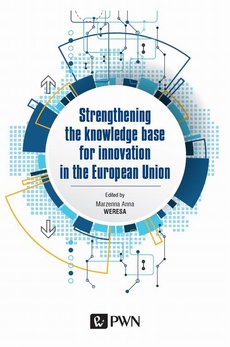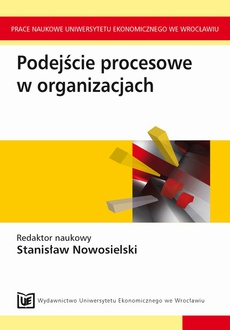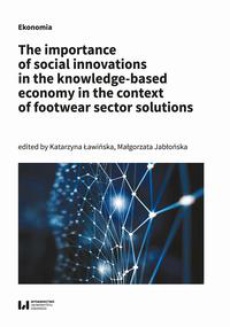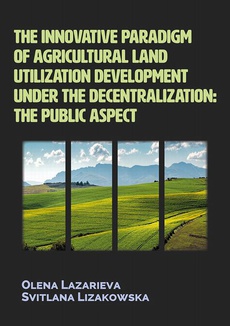POLECAMY

Strengthening the knowledge base for innovation in the European Union
Redakcja:
Wydawca:
Format:
ibuk
In 2010 the EU launched a flagship policy initiative “Innovation Union” aimed at increasing the innovation rate and translating it into smart, sustainable and inclusive growth. Strengthening the knowledge base is
one of its six pillars. This research, part of the “I3U – Investigating the Impact of the Innovation Union” project funded by the European Union’s Horizon 2020 programme, covers the impact of selected areas of the
Innovation Union initiative on innovation in Europe.
The questions that the book attempts to answer are the following: What are the effects of these diverse policy initiatives implemented at the EU
level? To what extent have they been implemented after seven years since the Innovation Union launch? What are the policy implications and
lessons learned?
The research findings are discussed in detail in eight chapters. These are based on a variety of unique data collected during desk and field
research, including surveys and interviews, which refl ect the opinions of all innovation system actors and stakeholders affected by these policy instruments.
| Rok wydania | 2018 |
|---|---|
| Liczba stron | 218 |
| Kategoria | Publikacje darmowe |
| Wydawca | Wydawnictwo Naukowe PWN |
| ISBN-13 | 978-83-01-20215-6 |
| Język publikacji | polski |
| Informacja o sprzedawcy | ePWN sp. z o.o. |
Ciekawe propozycje
Spis treści
| List of abbreviations | 9 |
| Preface | 12 |
| 1. Innovation Union initiative – an overview | 15 |
| 1.1. Introduction | 15 |
| 1.2. Innovation policy as an element of the innovation system | 15 |
| 1.3. History of the innovation policy in the European Union | 17 |
| 1.4. The Europe20 strategy and its Innovation Union initiative | 20 |
| 1.5. The European Union’s innovation performance in the years 2010-2017 in a comparative perspective | 23 |
| 1.6. Summary and conclusions | 27 |
| References | 28 |
| 2. Additionality from public support to R&D and innovation in the European Union | 31 |
| 2.1. Introduction | 31 |
| 2.2. Public financial support for innovation in the EU | 32 |
| 2.3. Theoretical background and hypothesis development | 33 |
| 2.4. Sample description and research method | 42 |
| 2.5. Results | 45 |
| 2.6. Discussion and conclusions | 47 |
| References | 54 |
| 3. The impact of Framework Programs on innovativeness in the European Union | 59 |
| 3.1. Introduction | 59 |
| 3.2. The FP7, CIP and H2020 programs in a nutshell | 60 |
| 3.3. Positioning of the FP7, CIP and H2020 key elements in the literature on innovation | 62 |
| 3.4. The impact and efficiency of the FP7, CIP and H2020 | 68 |
| 3.4.1. The impact and efficiency of the FP7 | 69 |
| 3.4.2. The impact and efficiency of the CIP | 71 |
| 3.4.3. The impact and efficiency of the H2020 | 72 |
| 3.5. The relationship between innovation input and innovation output from the innovation actors’ perspective | 73 |
| 3.5.1. The role of actors in the FP7 | 74 |
| 3.5.2. The role of actors in the H2020 | 75 |
| 3.6. Conclusions | 76 |
| References | 78 |
| Appendix | 82 |
| 4. Supporting the research and innovation base through priority European research infrastructures | 100 |
| 4.1. Introduction | 100 |
| 4.2. Definition, typology and basic features of research infrastructures | 101 |
| 4.2.1. Definition, basic features and benefits of research infrastructures | 101 |
| 4.2.2. Types of European research infrastructures | 103 |
| 4.2.3. Monitoring and evaluating the economic impact of research infrastructures, with a focus on potential indicators and data | 105 |
| 4.3. Theoretical background for analyzing research infrastructures | 108 |
| 4.3.1. Social capital theory, innovative milieu, and the concept of creative class | 108 |
| 4.3.2. Innovation systems theory | 110 |
| 4.3.3. Economic network theory | 112 |
| 4.4. Why the European Union needs to support the development of research infrastructures | 113 |
| 4.4.1. Fragmentation of European investments in research infrastructure | 113 |
| 4.4.2. The high complexity (scale and costs) of European research infrastructures | 114 |
| 4.4.3. The complexity of projects in partnerships | 115 |
| 4.4.4. The inherent technical complexity of projects | 116 |
| 4.4.5. The need to solve key societal challenges | 117 |
| 4.5. EU policy measures to support priority research infrastructures | 118 |
| 4.5.1. Solution to the identified problems – European Roadmap for the ESFRI | 118 |
| 4.5.2. Geographical distribution of FP7 (part INFRA) spending | 118 |
| 4.5.3. FP7 and Horizon 2020 program (part INFRA) investments by main groups of innovation systems | 121 |
| 4.5.4. Interactions between countries and their organizations engaged in Horizon 2020, part INFRA projects | 124 |
| 4.5.5. Analysis of FP7 and Horizon 2020 program (part INFRA) investments in research infrastructures by types of actors | 126 |
| 4.6. The impact of research infrastructures on European innovation – findings from empirical research, including the survey research | 128 |
| 4.6.1. Results of the survey research conducted on coordinators of research infrastructures | 128 |
| 4.6.2. The results of the survey research conducted on users of research infrastructures | 137 |
| 4.7. Conclusions | 143 |
| References | 148 |
| 5. The role of Global Research Infrastructures as a tool of innovation policy | 153 |
| 5.1. Introduction | 153 |
| 5.2. Global Research Infrastructures as an innovation policy tool | 154 |
| 5.3. Theoretical perspective | 158 |
| 5.3.1. Common-Pool Resources Approach | 158 |
| 5.3.2. The concept of Critical Mass | 160 |
| 5.3.3. Economics of Network Theory | 162 |
| 5.4. Implementation of Global Research Infrastructures | 163 |
| 5.4.1. Legal framework for Global Research Infrastructures | 163 |
| 5.4.2. Participation framework for Global Research Infrastructures | 164 |
| 5.4.3. Financial framework for Global Research Infrastructures | 165 |
| 5.5. Impact of Global Research Infrastructures | 169 |
| 5.5.1. Effects of financial and institutional leverage derived from non-EU countries | 169 |
| 5.5.2. Global Research Infrastructure performance indicators | 170 |
| 5.5.3. Results of the survey on European Research Infrastructure Coordinators | 170 |
| 5.5.4. Results of the survey on participants of projects financed by the FP7 INFRA and H2020 INFRA | 172 |
| 5.6. Conclusions | 173 |
| References | 175 |
| 6. Boosting public sector and social innovation in Europe | 181 |
| 6.1. Introduction | 181 |
| 6.2. Public sector and social innovation: the concept | 182 |
| 6.2.1. Understanding the role of public sector and social innovation | 183 |
| 6.2.2. Financing research on social innovation and its role in society and the economy | 184 |
| 6.2.3. The European Public Sector Innovation Scoreboard as a basis for further work to benchmark public sector innovation | 185 |
| 6.3. Theoretical background for analyzing the impact of financing research on public sector and social innovation | 186 |
| 6.4. Impact of the research program on public sector and social innovation | 188 |
| 6.5. Impact assessment of the pilot European Public Sector Innovation Scoreboard (EPSIS) | 192 |
| 6.6. Actors crucial to fostering public sector and social innovations | 193 |
| 6.7. Conclusions and policy recommendations | 199 |
| References | 200 |
| 7. European Institute of Innovation and Technology (EIT): towards the excellence of European science | 205 |
| 7.1. Introduction | 205 |
| 7.2. Theoretical perspectives on the EIT contribution to innovation | 209 |
| 7.2.1. The knowledge triangle concept | 209 |
| 7.2.2. The I-U collaboration approach | 210 |
| 7.2.3. The networked innovation approach | 211 |
| 7.3. The Strategic Innovation Agenda of the EIT | 212 |
| 7.4. Actors involved in the EIT policy | 214 |
| 7.5. Impact of the EIT and KIC actions | 221 |
| 7.6. Conclusions | 227 |
| References | 230 |
| Appendices | 234 |
| 8. Implementing evidence-based policies: lessons learned from Joint Research Centre (JRC) activity | 240 |
| 8.1. Introduction | 240 |
| 8.2. Evidence-based policy and its impact on innovation: a literature review | 241 |
| 8.3. The Joint Research Centre (JRC) as a science support for European policy makers | 246 |
| 8.3.1. Strengthening the European science base for policy making through the JRC | 247 |
| 8.3.2. Quality of JRC scientific papers containing evidence for policy making | 252 |
| 8.4. The impact of science-based policy on innovation: the case of the Joint Research Centre | 257 |
| 8.5. Conclusions | 266 |
| References | 267 |
| Final conclusions | 270 |
| List of tables | 274 |
| List of figures and graphs | 277 |
| Editor and author bios | 279 |
























